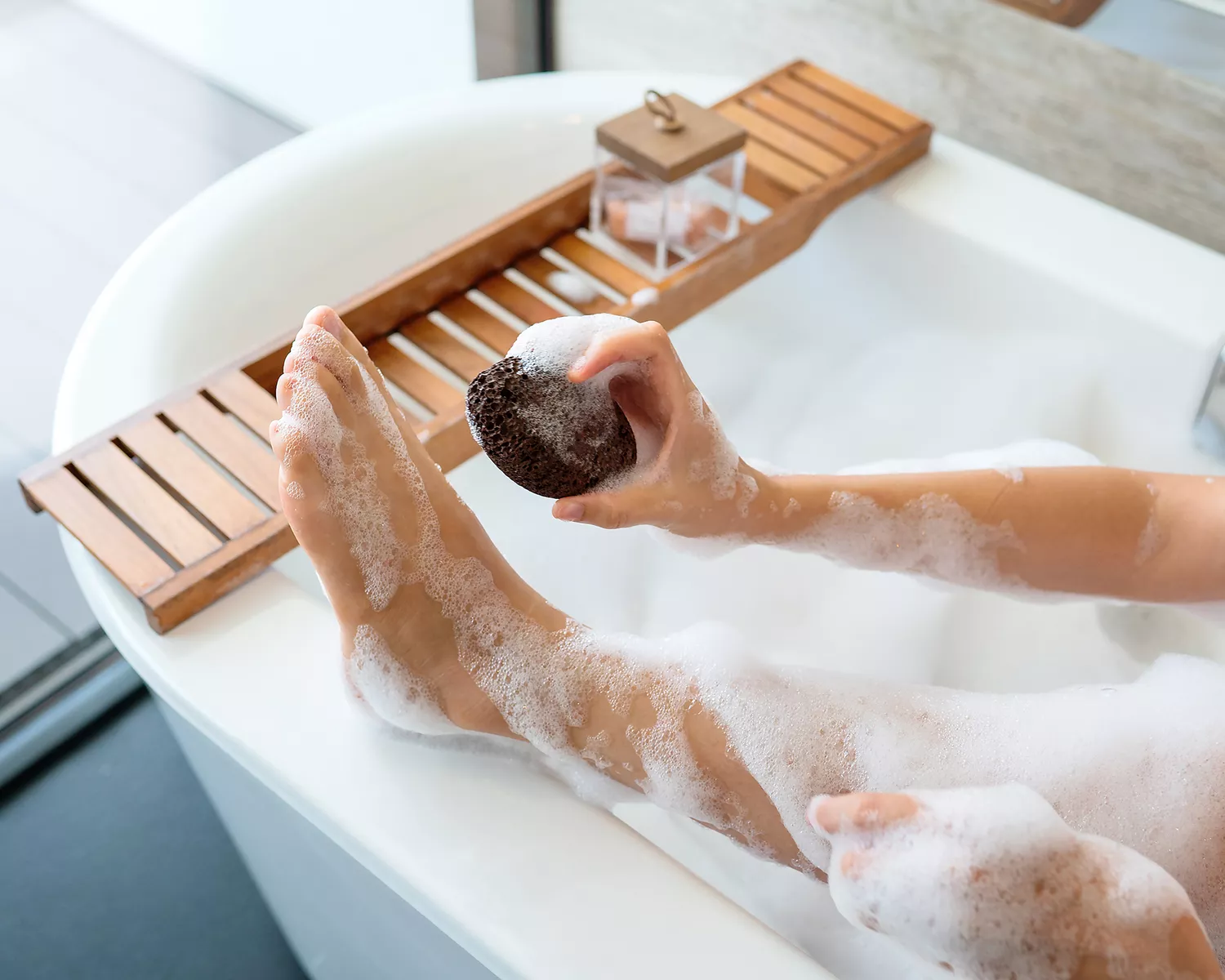
Getty Images / Stefan Tomic
When it comes to the skin on our body, we can all pretty much agree on one thing: We want it to be as soft as possible. Thats why body scrubs, lotions, creams, and butters fill the skincare aisles. But theres one spot thats extra tricky—our feet. "The skin on our palms and soles are the thickest (and become thicker) from repetitive trauma and pressure," explains Dr. Chris Tomassian, MD, board-certified dermatologist and founder of The Dermatology Collective in Glendora, CA. So how can you whip that tough skin into shape? Well, thats where foot scrapers come in.
"A foot scraper is an effective physical exfoliator. It removes stubborn calluses and dead skin buildup caused by being on our feet all day," says Dr. Jeannette Graf, board-certified dermatologist and Assistant Clinical Professor of Dermatology at Mount Sinai School of Medicine. "I recommend finding one that can be used wet or dry so you can use it conveniently in the shower. I also recommend finding one made of antibacterial material, like a ceramic stone. Avoid extremely abrasive scrapers and dont overdo it to avoid trauma to the skin."
Dr. Tomassian recommends using a pumice stone instead of a foot scraper if you have sensitive skin. "The wet porous rock provides a gentle exfoliation," he explains. "However, if you have thick calluses, use a metal (steel) scraper. They are typically a bit more effective but harsher."
Wondering if theres a difference between a foot scraper and a foot file? Theyre basically the same thing. "Both are mechanical tools (electric/manual) that use coarse stone or metal to remove dead skin cells," Dr. Tomassian says.
Though it might be tempting, less is more when it comes to foot scraping. "I would not recommend using a foot scraper more than a couple of times per week maximum," Dr. Graf says. "While its nice to exfoliate the dead skin for smoother feet, if you over-scrape the skin on the feet, it may create little injuries to the skin and result in irritation. If thick calluses are developing on the sides or base of the foot, you may need the attention of a podiatrist to evaluate if there is excessive pressure on certain parts of the feet. In certain cases where the weight is not distributed correctly on the feet, orthotics can be helpful to correct this imbalance."
Now that you know about foot scraping, follow these step-by-step tips to get your softest feet ever.
Meet the Expert
Dr. Chris Tomassian, MD, is a board-certified dermatologist and founder of The Dermatology Collective in Glendora, CA.
Dr. Jeannette Graf, MD, is a board-certified dermatologist and assistant clinical professor of dermatology at Mount Sinai School of Medicine.
of 07
Soak Your Feet
Soak your feet in warm water for about five minutes to help soften them. "Make sure your feet are saturated with water to soften the skin for easy exfoliation," Dr. Graf says. "The best time to use a foot scraper is in the shower because your feet are softened from the water, making it easier to exfoliate the dead skin without having to use too much force. Plus, its convenient and requires no clean-up afterward."
of 07
Apply a Moisturizer and Begin Scraping
Dr. Graf says you can apply an oil, soap, or scrub to your feet to create an extra barrier. "This can also help moisturize the skin," she says. "Once your skin is softened, you can start using your foot scraper. Ensure youre using gentle strokes and avoid areas where the skin is softer and sensitive. "If you over-exfoliate, this can leave the skin on your feet tender.
For this reason, Dr. Tomassian advises moving the scraper in only one direction. "Do not go over one area too many times to limit taking too much skin off the foot," he cautions. "Slowly move down toward the toes and adjust the tools pressure to how thick the skin is. Typically, as you get closer to the toes, the skin is slightly thinner."
Remember that even though the skin on your feet is thicker, it can still be injured just like any other part of the body. So never scrape over any open cuts or wounds, and do not try to scrape off moles or other lesions on the feet, warns Dr. Tomassian. "If your skin is dry and cracked, dont use a foot scraper but rather cover your feet in petrolatum ointment and place socks over them," he adds.
of 07
Use a Pumice Stone
After using your foot scraper, grab a pumice stone. "You can use a pumice stone if youd like to smooth out the fresh skin post-exfoliation," Dr. Graf says. "Using circular motions, scrub the entire foot."
of 07
Rinse Your Feet
Rinse off your feet once again and then dry with a towel.
of 07
Apply Moisturizer Again
"Using the foot scraper removes part of your stratum corneum (the top layer of the skin), which helps protect against water loss," Dr. Tomassian says. "You should always apply a moisturizer after exfoliation to maintain and enhance hydration. Apply a thick moisturizer cream or emollient (such as Vaseline or Aquaphor) to the feet and cover with socks to trap moisture."
of 07
Clean Your Foot Scraper
Its best to clean your foot scraper after each use. "Cleaning your tools is very important to limit infection," Dr. Tomassian says. "After every use, soak your tool in at least 70% alcohol and wipe it down or let it air dry." If any particles are trapped in the foot scraper, Dr. Graf recommends removing them with a brush or sponge.
of 07
Establish a Regular Maintenance Routine
On days youre not foot scraping, maintain your feet with regular moisturizing. "For really soft feet, its important to hydrate the area regularly," Dr. Graf says. "I recommend applying a foot cream before bed and then putting on socks to sleep in, so the hydration is soaking in throughout the night."